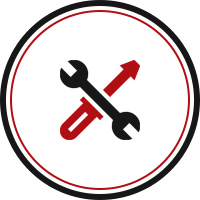
Since its introduction in the 70s, cured-in-place pipe lining, or CIPP, has become an industry-standard in sewer drain restoration, replacing its dig-and-replace predecessor. Integrity Environmental Services offers a closer look at how pipe lining came to be and why it’s the preferred pipe repair solution today.
What Is CIPP?
Cured-in-place-pipe sewer pipe lining is an efficient pipeline restoration technique, known as trenchless repair, that inflates an epoxy resin impregnated textile tube in an existing pipeline. The liner’s resin sticks to the interior and hardens. This is known as the trenchless process, not unlike the method used for trenchless pipe lining in Lancaster, PA. It eliminates the need for excavation while leaving a durable new pipe within a pipe.
CIPP Origins
The origins of CIPP can be traced back to 1971 in the UK. Eric Wood, an agricultural engineer invented the process to fix an overhead air duct at a mushroom farm. Having been granted a patent in 1977, Eric Wood proceeded by starting his company, Insituform.
Over time, CIPP adoption grew. In 1994, however, patents expired. Since then, multiple pipe lining companies have developed the process, using different textiles and resins, such as polyester, vinyl and epoxy, and alternative curing processes, including hot water, air, steam and LED and UV light.
Consequently, CIPP has become the preferred sewer pipe lining repair solution, completely changing the drain restoration industry.
What Makes CIPP an Ideal Solution
Until CIPP, trenchless sewer pipe lining repair and replacement was essentially dig-and-replace, which caused major disruptions to roads and traffic. All told, the process could take weeks. CIPP, on the other hand, can be completed in a day with minimal disruption to traffic.
North American sewer systems have also aged and begun to require extensive restoration. Without CIPP, the effort would be massive in terms of disruption, scale and costs. CIPP has made restoration efforts of this kind and pipe restoration in general manageable.
CIPP involves liners, air pressure, curing and two-part epoxies, which structurally join with and support the existing pipe. As a result, CIPP can work in any existing soil conditions, and it doesn’t risk ground movements, making it a safe sewer pipe lining solution for any kind of pipe material, including cast iron, PVC, and clay.
Our primary focus here at Integrity Environmental Services is CIPP and pipe bursting in municipal and commercial locations. To learn more about the advantages of cured-in-place pipe give us a call today.
Contact Our Team Today
Integrity Environmental Services is among the top pipe lining companies today that knows how to plan, coordinate, and complete large-scale projects with maximum efficiency. With our experts handling your project, you can always expect honest, clear, and fair rates as well as our undivided attention to every detail, from initial planning to project completion.




